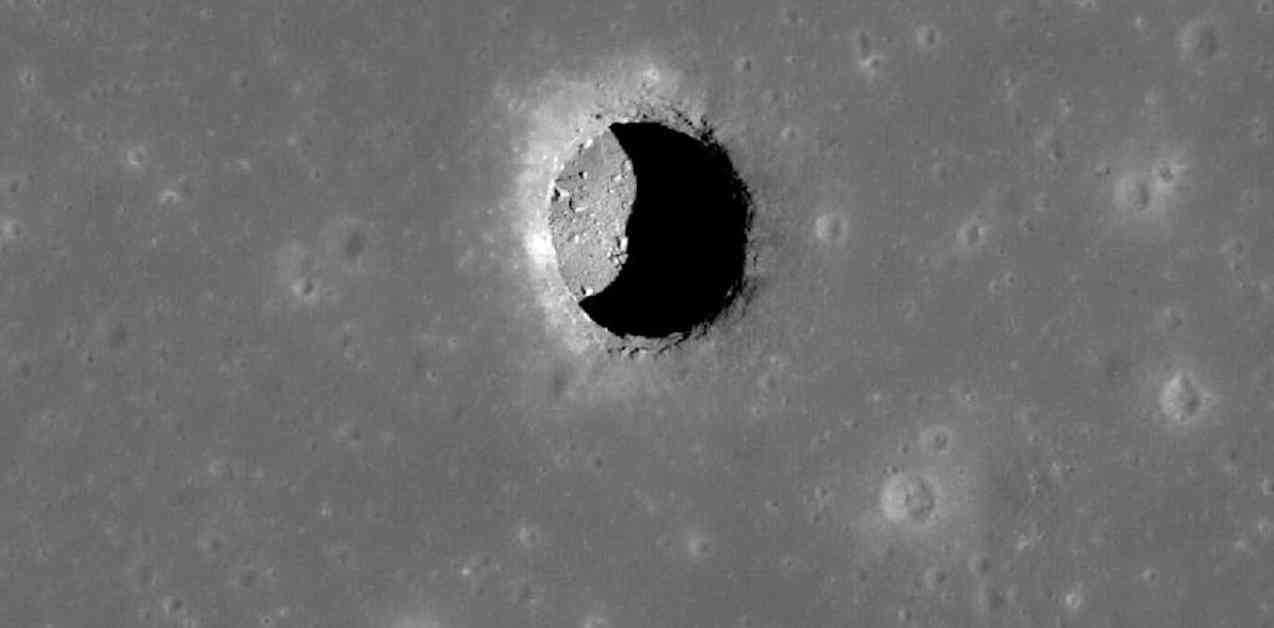After 55 years since Apollo 11 landed humans on the Moon, scientists have made an exciting discovery of a large cave system near the landing site of the astronauts. By analyzing radar images taken by Nasa’s Lunar Reconnaissance Orbiter spacecraft in 2010, researchers have identified that huge pits found on the Moon could be “skylights” leading to extensive caves and tunnels beneath the lunar surface. These caves could serve as valuable shelters for future astronauts looking to establish a base on the Moon.
The cave in question is accessible through a pit located in the well-known Mare Tranquillitatis (Sea of Tranquility) region, where Neil Armstrong and Buzz Aldrin famously landed in 1969. While Mare Tranquillitatis may not be the primary choice for a human base due to the lack of ice needed for survival, the presence of one cave indicates the likelihood of other caves in more suitable locations for human settlement.
Ice is believed to exist at the lunar poles, offering a source of water for astronauts to drink, produce oxygen, and create rocket fuel. The poles are therefore considered ideal for establishing a lunar base due to the reduced need to transport water from Earth. The newly discovered cave systems on the Moon present a natural shelter for potential lunar bases, offering protection from cosmic rays and maintaining stable temperatures compared to the extreme fluctuations on the lunar surface.
The Mare Tranquillitatis pit, one of approximately 200 known openings on the Moon, has been confirmed to lead to a cave system below the lunar surface. The pit, with a width of about 100 meters and steep walls descending between 130 and 170 meters, is the deepest known lunar pit to date. Through radar data analysis and computer simulations, scientists have determined that the pit connects to a subsurface cave conduit, hinting at the existence of a larger network of tunnels and conduits beneath the Moon.
The discovery of these caves opens up exciting possibilities for future lunar exploration and settlement. In addition to providing natural shelter, the caves offer a more consistent temperature environment compared to the surface, making them ideal for building shelters. The underground caves also offer protection against asteroid impacts, a common occurrence on the Moon due to its lack of atmospheric shielding.
While the presence of lunar caves could reduce the materials needed for lunar settlement, challenges such as safe access to the caves and assessing structural integrity remain. Future explorers may need to devise methods for descending and ascending the steep walls of the pit safely. Furthermore, the potential length and width of the underground system suggest it could accommodate multiple lunar structures without extensive preparation.
The formation of lunar caves is likely attributed to ancient lava tubes created when the Moon was volcanically active millions of years ago. A lava flow can develop a hardened crust, forming a roof over the flowing lava stream, leaving behind a hollow tube once the lava ceases. Discovering similar cave structures near the lunar poles would provide astronauts with optimal conditions for settlement, combining natural shelters with access to water ice for sustained lunar missions.
Identifying these natural shelters from space allows for strategic mission planning to utilize the caves effectively. Future astronauts could potentially inhabit these volcanically formed caves on the Moon, offering a unique opportunity to establish a prolonged human presence on Earth’s celestial neighbor.












